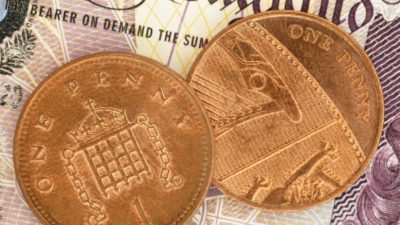Lloyds (LSE:LLOY) shares fell in March, but not as much as some other banks. Financial stocks sunk after Silicon Valley Bank (SVB), a key lender to technology start-ups, collapsed, engendering fears about unrealised bond losses throughout the banking sector.
The Lloyds share price is down around 10% since peaking in late February. And as someone who’s very bullish on the stock, I see this as a buying opportunity.
Let’s find out why.
Bond losses?
In early March, SVB offloaded a portfolio of assets, mainly US government bonds, in an attempt to steady its finances. However, this spooked the market, and depositors withdrew their money.
But SVB wasn’t the only casualty. Investors grew concerned that the sector was sitting on billions on unrealised bond losses. That’s because they saw it selling its bonds at losses when its finances came under pressure.
Its $21bn bond portfolio had a yield of 1.79% and a duration of 3.6 years — in March the three-Year US Treasury note yielded 4.7%. As we know, bond prices fall as yields rise. In other words, these losses have come about as rising interest rates have made SVB’s bonds less valuable.
The thing is, other banks aren’t like SVB and their bond holdings are more diverse. Moreover, other banks don’t just finance one highly risky sector, they’re also more diverse. As such, most major banks are unlikely to face challenges from customers looking to withdraw their funds.
This also means that any unrealised bond losses will remain unrealised because big banks don’t need to sell them. Instead, they’ll be held until maturity.
To cut a long story short, I think this creates an excellent buying opportunity. Bank share prices have fallen, but the economics remains the same.
Lower rates
Higher interest rates are good for banks until they’re not! Today, interest rates are providing a huge tailwind for banks, as net interest income soars.
But, they’re also very high and that’s causing more debt to turn bad. When debt turns bad, banks have to put more money aside and impairment charges rise.
In the near term, that should be a real concern for investors. The UK economy is faring better than many anticipated, but with interest rates at their highest level in over a decade, defaults will likely be high.
As such, I’m buying for when interest rates fall, and I’m expecting that to start in H2. The thing is, there’s an interest rate sweet spot for banks. It’s around 2-3%.
At these levels, banks will benefit from higher net interest margins than they have done over the past decade. But impairment costs will likely remain lower.
Lloyds is among the most interest rate sensitive banks. That’s because it doesn’t have an investment arm and the majority of its business comes from UK mortgages.
So while net interest income might be soaring right now, I’m buying for more sustainable levels when impairment charges are less of an issue.







